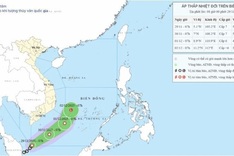Under the new regulation, couples now have the right to decide the timing, number of children, and spacing between births, based on factors such as age, health, education, employment, income, and their ability to raise children. The ordinance takes effect immediately upon approval.
The move marks a significant shift in Vietnam’s population policy that aligns with the country's rapidly aging population and declining birth rates in many localities. This is considered a strategic adjustment that gives couples greater autonomy in family planning, while helping to maintain replacement-level fertility and ensure long-term demographic balance.
Minister of Health Dao Hong Lan stated that the revision aims to address disparities in birth rates between regions and demographic groups, while also preventing fertility from falling below replacement levels. Prolonged low fertility, she warned, could have serious consequences for Vietnam’s economic growth, social stability, national security, and defence.
The government acknowledged that the previous birth limit policy is no longer suitable, especially as the national fertility rate continues to decline. Vietnam’s total fertility rate has dropped from 2.11 children per woman in 2021 to 2.01 in 2022, 1.96 in 2023, and 1.91 in 2024, the lowest in the country’s history. The rate is expected to fall further in the coming years.
Projections indicate that Vietnam will exit its demographic dividend by 2039. By 2042, the working-age population will peak, and from 2054 onward, the population may begin to decline. This trend could lead to labour shortages, shrinking population size, and a rapidly aging society, posing challenges to sustainable socio-economic development.
In March 2025, the Party Central Committee’s Inspection Commission issued Guideline No. 15, amending provisions of the 2022 directive on disciplinary measures for Party members. According to the update, Party members who have a third child or more will no longer be subject to disciplinary penalties.




















